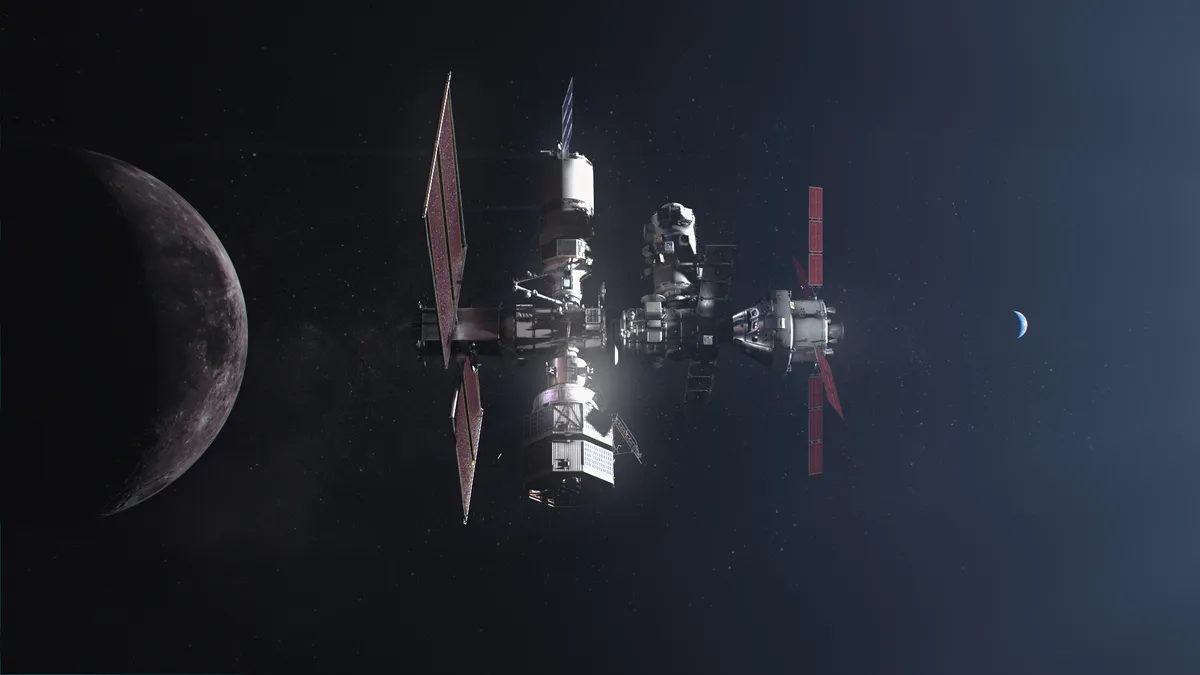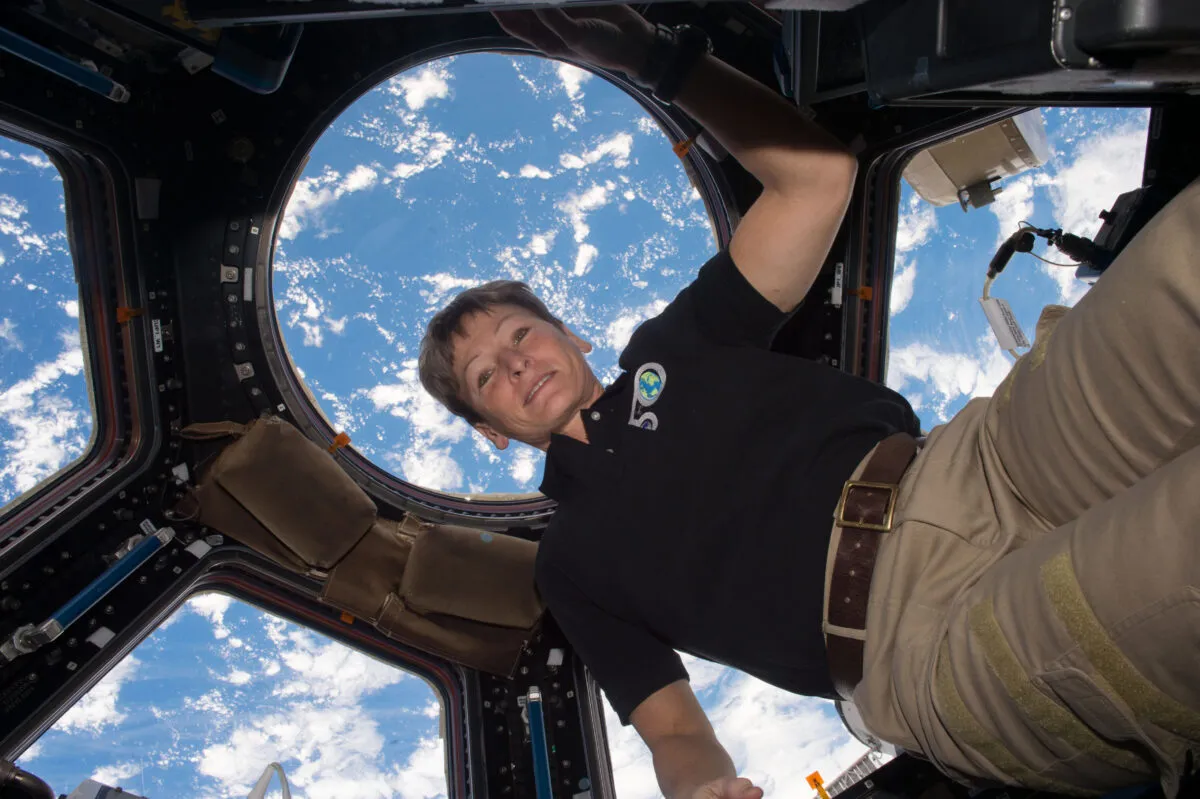The Lunar Gateway will sit in an elliptical orbit: we’ll get within 10,000km of the Moon and then out to about 70,000km. And every six-and-a-half days we’ll make a complete revolution.
It’ll be maybe one-eighth of the size of the ISS and is going to be human-tended, nominally for 30 days but we can go to 60 or 90 days.
Even though it’s not permanently crewed, we are going to run research on the Lunar Gateway 24/7, 365 days a year.

Constructing the Lunar Gateway
The first two elements of the Gateway – the PPE (Power Propulsion Element) and HALO (Habitation and Logistics Outpost) – are planned to fly up on a Falcon Heavy rocket within the next few years, and will take about a year to get to the Moon using solar electric power propulsion.
So the initial Gateway would be in place and ready to accommodate the first crew of Artemis IV in late 2026.
It will have a lot of similarities with the International Space Station: a cupola, so the crew can see out; exercise devices and sleep stations.

But [for the crew] it’s more of a camping trip than a six-month hotel stay like the ISS.
Artemis III is our fastest, least complex way to get a crew to the surface.
Every mission after that is going to come to the Gateway. It will be an aggregation point.
Ahead of a mission we’ll launch the supplies, research tools, EVA suits, all those kinds of things, as well as the human landing system.
Finally, the four crew will come on an Orion. [Once on board] two crew get in a lander and go to the surface of the Moon, while two crew stay on the Gateway and do research or maintenance.
Thinking forward to potential Mars missions, the Gateway offers a place to fine-tune modules before you put the crew in there to head off on an 18-month journey to Mars and back.
We’re building the Gateway to last 15 years. Just like the ISS, which extended its life based on how well it’s performing, I fully envision us doing the same on Gateway.
It wouldn’t surprise me if we’re good for 20 or 25 years.
This article originally appeared in the October 2022 issue of BBC Sky at Night Magazine.

